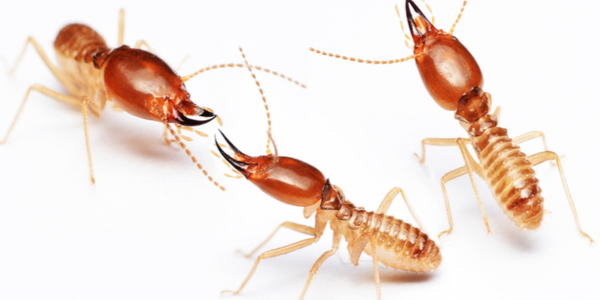Have you noticed holes in your home’s wood or drywall? Do you see termite mud tubes or tiny sawdust piles? If so, you might have termites. To help you prevent an infestation in your home, we’ve created a checklist with all the major signs of termites you should look for.
A termite infestation might start small and discreetly but it can grow quickly and cause real damage. The signs won’t appear overnight, but they’ll eventually be there. Termite colonies can reach into the thousands or, in extreme cases, millions as they seek new food sources and homes. If you’re unsure if you have a problem, a termite inspection from Gregory Pest Solutions can identify termites in your home or business.
What Do Termites Look Like?
An obvious sign you have termites is seeing them. But do you know what a termite looks like? They spend much of their time burrowing and may not always be visible. They’re often mistaken for ants and it’s easy to confuse swarmers (termites with wings) with flying ants.
Termites are tiny insects measuring 1/8-1/2 inch in length. They range in color from milky white to gold to dark brown and often have a translucent quality. Their appearance can vary depending on the species and caste member within that species. You can tell termites from other insects by their soft bodies, broad wastes and straight antennae.
Termites colonies are organized in three different castes:
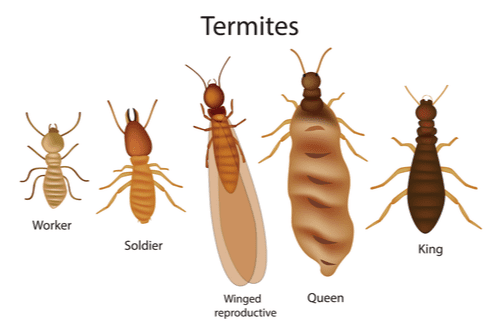
- Workers are the most common termites and do the most damage. They use their strong mandibles to chew up wood for the cellulose that feeds the colony.
- Soldiers protect the colony from ants and other invaders. They often have larger or darker heads with bigger mandibles than the workers.
- Alates or swarmers are flying termites that establish new colonies. Once they find a suitable location, they shed their wings and become the king and queen of the new colony. They are the reproductive members of the species. You can identify termites vs flying ants by their uniform wing length. Flying ant’s wings are uneven.
Three Common Types of Termites
While there are thousands of termite species dating back to prehistoric times, there are three primary species you should be concerned with:
Subterranean termites are found in every state except Alaska. As the name suggests, portions of their nest are usually underground. Subterranean termites have a more box-shaped head. They feed on structural wood and can be difficult for homeowners to notice. Signs of subterranean termites include:
- Tunnels along wood grain
- Mud tubes
- Underground nests
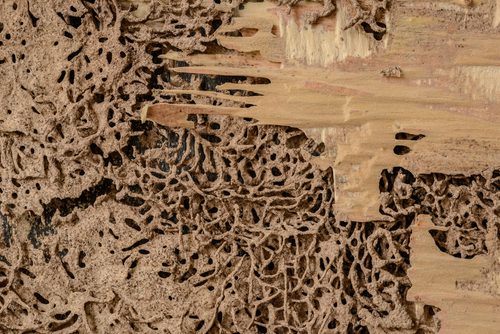
Formosan termites are the most destructive type of termite found in the southeastern United States. They tend to have larger nests than subterranean termites and, as a result, cause more damage once they move in. Formosan termites often have heads darker than their bodies. Signs of Formosan termites include:
- Discarded wings
- Mud tubes
- Nests in walls
- Carton nests
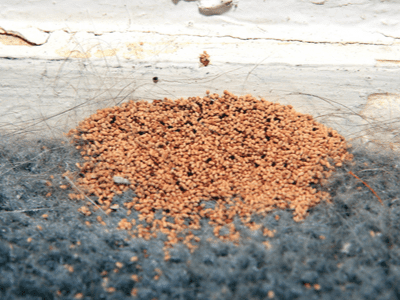
Drywood termites, unlike other species, feast on dry, solid wood like furniture and can take years to become noticeable. They can be found in much of the southern U.S. Signs of drywood termites include:
- Hard waste pellets
- Pushout holes in wood
- Tunnels across wood grain
7 Signs of Termites
Termites usually enter your home via a foundation crack or gap along a utility line. They seek out moist or rotted wood that is easy to chew and digest. Common places to find them are basements and crawl spaces where moisture has damaged the wood.
Look for these signs when identifying termites:
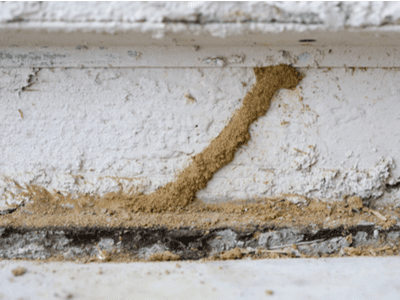
- Mud tubes. As the name implies, these are tunnels made from mud and wood that termites use to travel into your home. They protect the colony as they travel between their nest and food sources.
- Wall or ceiling damage. Look for bubbling paint and blistering surface wood. May sound hollow when tapped.
- Termite droppings. Not to be confused with sawdust, termites leave small piles of feces composed of wood pulp.
- Discarded wings. Once flying termites have established their new nest and select a mate, they discard their wings. Discarded wings in or around your home could mean a new colony has moved in.
- Chewing or banging sounds. Put an ear to your wall. You may be able to hear the workers chewing the wood or the soldiers banging their heads in warning.
- Garden damage. If your termite nest began outside, you may notice damaged fencing or deck wood.
- Termite eggs. Termite larvae. Eggs and larvae are usually well hidden deep inside the nest. Eggs are tiny white or tan ovals and found in clusters. Termite larvae are small white worms that resemble maggots.
How to Get Rid of Termites
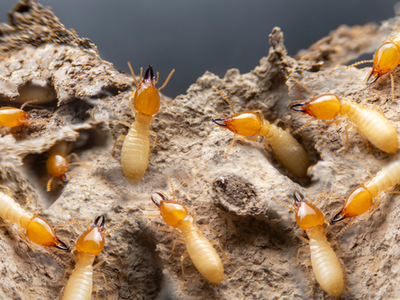
Don’t let termites move into your home or business. While you can use commercial baits and traps to address the problem, you may see a recurrence. The surest way to eliminate termites and prevent full infestation is by using a professional technician.
A pest professional can identify where termites are coming from as well as treat the problem. Once we identify the source of your termites, we can address the problem using a variety of treatments. Depending on the size and depth of your termite problem we may use the Sentricon baiting system or Termidor’s termiticide.
See our termite treatment page for more details or call us. One of our friendly staff would be happy to answer your questions.
Professional and Reliable Termite Control
If you’re concerned about the early warning signs of termites, contact Gregory today. One of our technicians can inspect your home for signs of termite damage and determine if you have a problem. If you do have termites, we can recommend a fast and effective treatment plan to eliminate termites and keep them from coming back.

